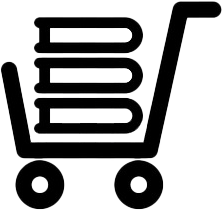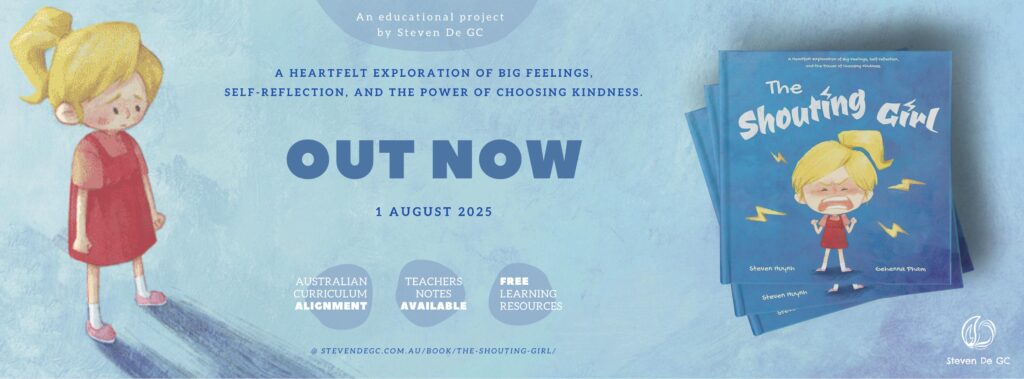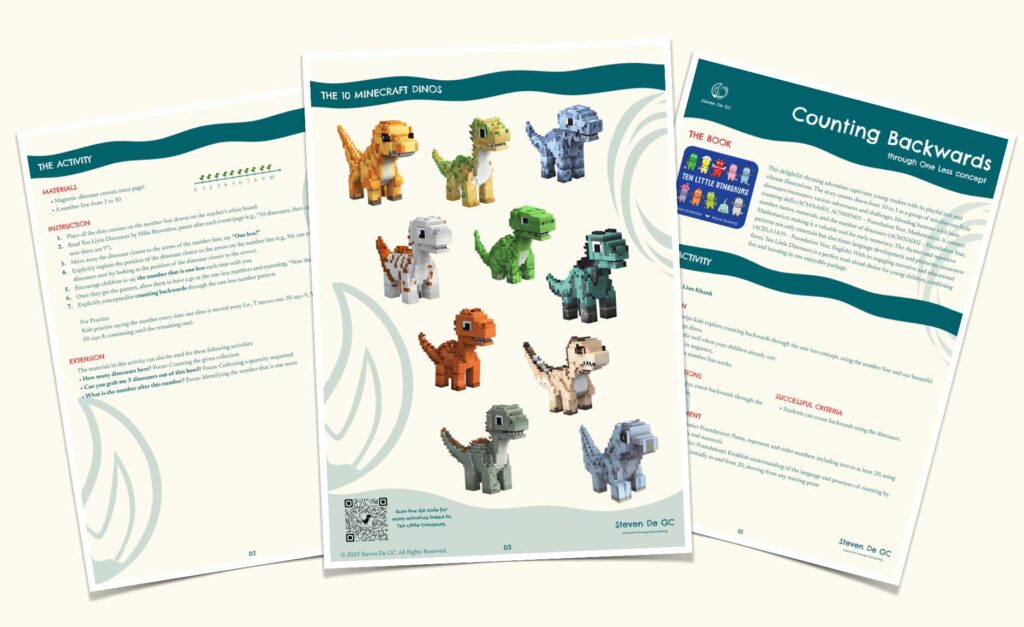- Introduction (5 minutes)
- Read the book One Is a Snail, Ten Is a Crab aloud to the class.
- Ask students to count the number of feet on each animal as they appear in the story.
- Whole class Activity (10 minutes)
- Show a flashcard with one animal (e.g., a Snail).
- Repeat with other animals, keeping it simple (e.g., Crab = 10, Dog = 4).
- Practice
- Teacher Activity (one-on-one)
- Ask students to pick a card on a table or board and count the animal feet.
- Ask them to collect the same number of tokens or use their fingers to match the number of feet.
- Or, to make it more challenging, say a number out loud (e.g., “4”) and ask them to point to or pick the flashcard of the matching animal, and reason why.
- Encourage them to count aloud.
- EA Activity (worksheet)
- Match the animal to the correct number of feet.
- Colour in the animal that has 10 feet.
- Teacher Activity (one-on-one)
Let’s Count Feet

The Book
One Is a Snail, Ten Is a Crab
Written by April Pulley Sayre and Jeffrey Sayre, illustrated by Randy Cecil, published by Walker Books
This delightful and imaginative book introduces young readers to counting (ACMNA001, AC9MFN01 – Foundation Year, Mathematics) and basic multiplication concepts. By using the number of feet on various animals, the story encourages children to explore basic counting with feet (ACMNA002 – Foundation Year, Mathematics) and repeated addition, grouping, and arrays to represent numbers. This creative approach not only reinforces counting skills but also provides a playful foundation for understanding multiplication (ACMNA031 – Year 2, Mathematics). Additionally, the book supports early number recognition and sequencing as children practice counting and comparing quantities. With its vibrant illustrations and humorous scenarios, this book engages young learners while fostering critical thinking and problem-solving skills in an enjoyable way.
Resource creator
Lian Khanh
Subject
Level
Description
This basic activity focuses purely on counting skills and familiarising students with numbers in a fun and engaging way. This activity works well when your children already know the order in the sequence of numbers.
Learning Intentions
• Students are practising basic counting skills up to 10.
Successful Criteria
• Students can count the number of feet correctly.
Curriculum Alignment
AC9MFN01 9.0 (Mathematics Foundation): Name, represent and order numbers including zero to at least 20, using physical and virtual materials and numerals
• responding to a request to collect a quantity of objects or reading a numeral and selecting the associated quantity of items from a collection to match the number required; for example, collecting 9 paint brushes after hearing the word ‘nine’
• recognising the order in the sequence of numbers to (20) and identifying the number that is “one less” than a given number and the number that is “one more”; for example, playing instructive card games that involve reading and ordering number cards; using counting songs, story books and rhymes to establish the forwards and backwards counting sequence of numbers in the context of active counting activities
• understanding and using terms such as “first”, “second”, “third”, … “fifth”… to indicate ordinal position in a sequence; for example, creating a number track using cards with the numerals zero to (20) and describing positions using terms such as first, last, before, after, between
• recognising, writing and reading numerals written on familiar objects; for example, in images, text or illustrations in story books; writing a numeral on a container as a label to show how many objects it contains
• connecting quantities to number names and numerals when reading and reciting stories and playing counting games or determining and reasoning about the size of sets of objects within First Nation Australians’ instructive games; for example, Segur etug from Mer Island in the Torres Strait region
ACMNA001 8.4 (Mathematics Foundation): Establish understanding of the language and processes of counting by naming numbers in sequences, initially to and from 20, moving from any starting point
• reading stories from other cultures featuring counting in sequence to assist students to recognise ways of counting in local languages and across cultures
• identifying the number words in sequence, backwards and forwards, and reasoning with the number sequences, establishing the language on which subsequent counting experiences can be built
• developing fluency with forwards and backwards counting in meaningful contexts, including stories and rhymes
• understanding that numbers are said in a particular order and there are patterns in the way we say them
ACMNA002 8.4 (Mathematics Foundation): Connect number names, numerals and quantities, including zero, initially up to 10 and then beyond
• understanding that each object must be counted only once, that the arrangement of objects does not affect how many there are, and that the last number counted answers the ‘how many’ question
• using scenarios to help students recognise that other cultures count in a variety of ways, such as the Wotjoballum number systems
Materials
- The book One Is a Snail, Ten Is a Crab.
- Flashcards with pictures of animals and their corresponding number of legs (e.g., Snail = 1, Dog = 4, Crab = 10).
- Counters or tokens for hands-on counting.
Instructions
Extensions
The flashcards in this activity can also be used for these following activities:
Number and Algebra
- Level 1 ❯ Please write the number of feet of this animal on your mini board. Focus: Counting a collection and writing a numeral.
- Level 2 ❯ Look at this number. What animals do you think of? Focus: Subitising and critical thinking skills.
- Level 2 ❯ Write addition sentences using the flashcards. Focus: Counting, writing numerals and number sentences (e.g., a snail and a dog makes five legs → 1 + 4 = 5)
Phonics
- Level 1 ❯ Sound out the word “crab” please. Focus: Recognising lower case letters and their sound.
- Level 2 ❯ What does this word say (e.g., crab)? Focus: Blending.
Downloads
| Free Version | Paid Version | |
|---|---|---|
| Material contents | Limited | Full access |
| Instructions | Not included | Included |
| Redownloads | 5 per download | Unlimited |
| Download | FREE DOWNLOAD | BUY WITH |













Leave a Reply